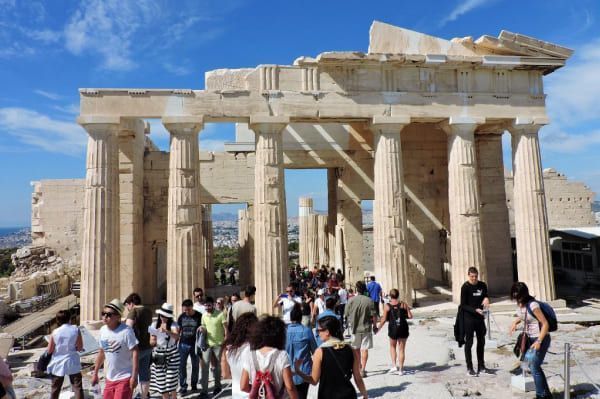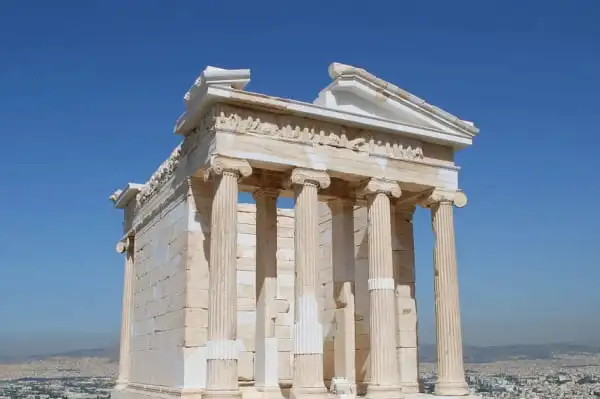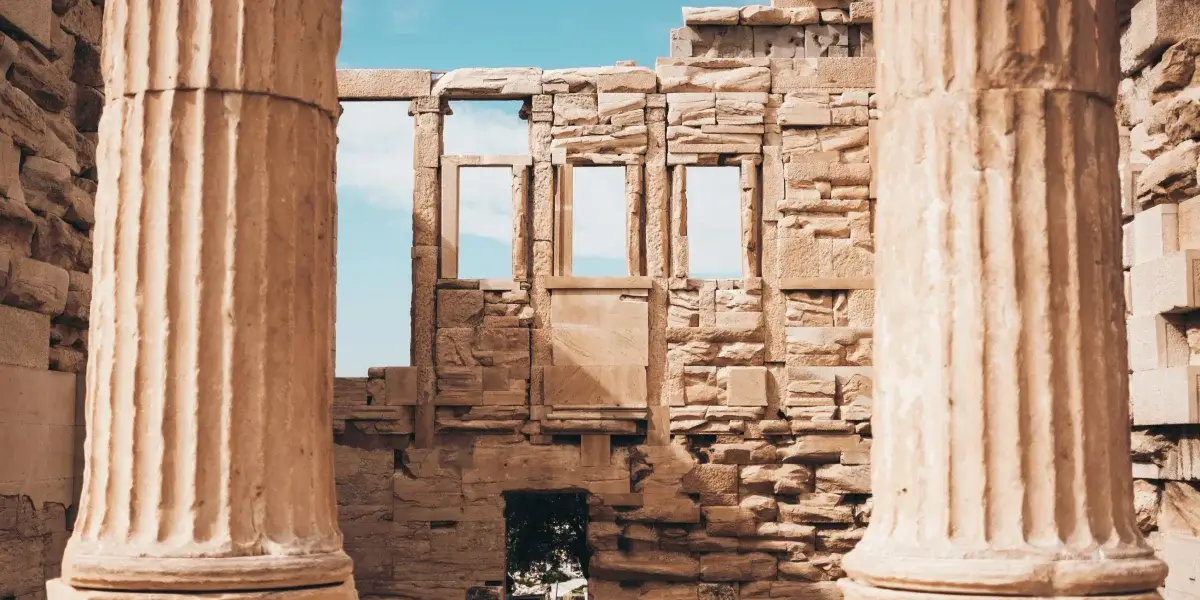
A Triumph of Ancient Engineering
The Acropolis, which means “high city,” is a remarkable citadel that dates back to the 5th century BCE. It was primarily built during the Golden Age of Athens, under the leadership of the great statesman Pericles. The centerpiece of the Acropolis is the Parthenon, a Doric temple dedicated to the city’s patron goddess, Athena. The temple’s construction was a marvel of engineering, with its precisely cut marble blocks and innovative architectural features. Architectural Masterpieces The Acropolis complex is not limited to the Parthenon alone. It is also home to several other stunning structures, each with its unique significance. The Erechtheion, with its famous Caryatid Porch, stands as a tribute to both Athena and Poseidon. The Propylaea, an imposing entrance gate, offers a glimpse of the grandeur of the Acropolis. The Odeon of Herodes Atticus, a stone theater, has hosted performances for millennia. A Beacon of Democracy The Acropolis embodies the ideals of ancient Athens, often referred to as the cradle of democracy. It was a place where citizens gathered to participate in the democratic process, making decisions that would shape the destiny of the city-state. This spirit of democracy, which had its roots in the Agora below, continues to inspire people from around the world. Cultural Significance The Acropolis is not just an archaeological site; it’s a cultural treasure. Its artistic and architectural achievements have had a profound impact on the course of Western civilization. The statues, friezes, and decorative elements that adorned the temples were created by the most skilled craftsmen of the time, leaving a lasting legacy of artistic excellence. Preservation and Restoration Over the centuries, the Acropolis has faced its share of challenges, from invasions to natural disasters. However, its enduring spirit has prevailed. Restoration efforts have been ongoing for many years to ensure that the site remains a testament to ancient Greece’s legacy. The Acropolis Museum, located nearby, houses many of the original sculptures and artifacts found on the site. A Modern Icon Today, the Acropolis remains one of the world’s most iconic landmarks, drawing millions of visitors from around the globe. Its timeless beauty, historical significance, and the breathtaking panoramic view of Athens it offers continue to captivate all who behold it. A Living Legacy The Acropolis of Athens is more than just an ancient ruin; it’s a living legacy of a culture that has shaped the world. It reminds us of the power of human creativity, the pursuit of knowledge, and the enduring spirit of democracy. It stands as a timeless beacon, connecting us to the greatness of ancient Greece and inspiring future generations to preserve and celebrate their heritage. As a symbol of human achievement, the Acropolis continues to bridge the gap between the past and the present, reminding us of the enduring brilliance of our shared history.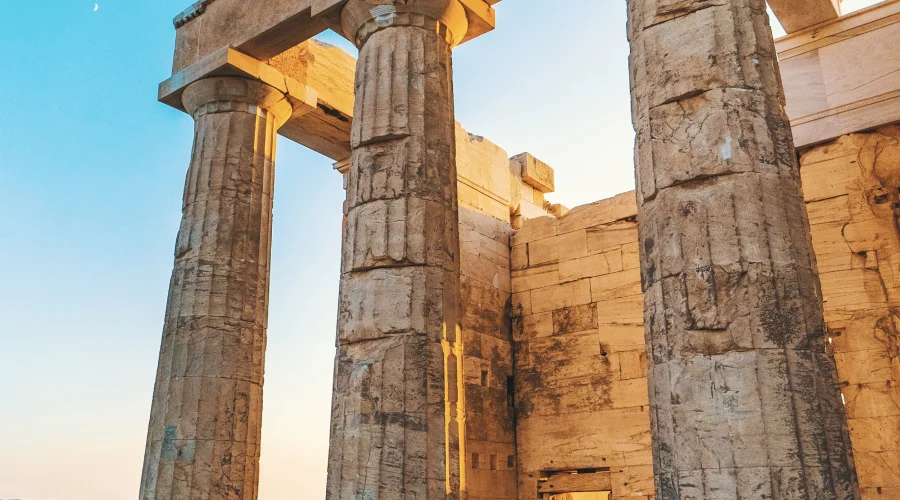
The Creation of an Architectural Marvel
The Acropolis, a term derived from the Greek “akros” (meaning “high” or “extreme”) and “polis” (meaning “city”), is an imposing rocky outcrop that rises dramatically above the city of Athens. This strategically advantageous location, perched above the city, was chosen as the site for fortifications and later developed into a sacred and monumental space. At the heart of this complex stands the Parthenon, one of the most celebrated and renowned temples globally, devoted to the Greek goddess Athena, the city’s eponymous protector. Construction of the Parthenon commenced in 447 BC and was finalized in 438 BC, coinciding with the zenith of Athens’ Golden Age under the visionary leadership of Pericles. The Parthenon is a symbol of architectural excellence, characterized by its iconic Doric columns, intricate metopes, and the extraordinary frieze that adorns its exterior. The frieze, in particular, is a triumph of artistic mastery and storytelling, featuring scenes from Greek mythology and history, further emphasizing the marriage of art and culture. Beyond the Parthenon, the Acropolis boasts several other notable structures that contribute to its architectural grandeur. These include the Erechtheion, famed for its iconic Caryatid Porch; the Temple of Athena Nike, an exquisite example of Greek Ionic architecture; the Odeon of Herodes Atticus, a marvel of Roman architecture; and the Propylaea, an impressive monumental gateway. Together, these structures exemplify the remarkable skills and artistic achievements of the ancient Greeks.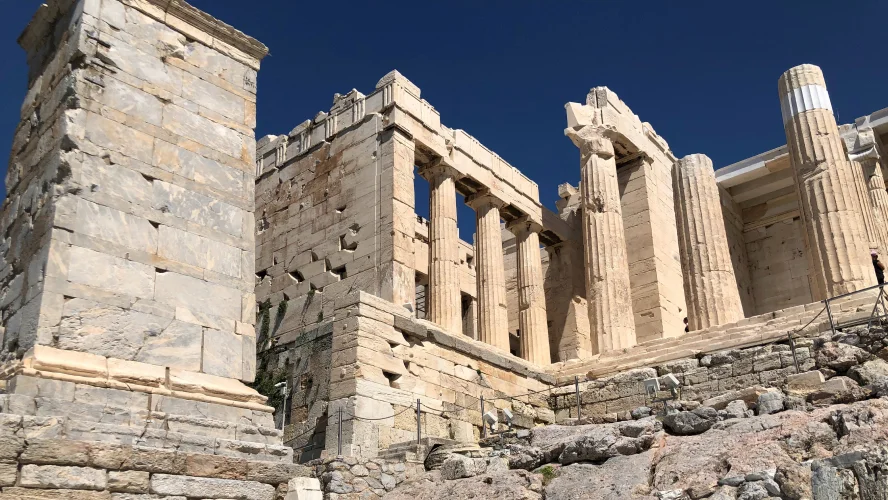
The Mythological and Religious Significance
The Acropolis of Athens is not merely an architectural masterpiece; it is a site rich in mythological and religious significance that has shaped the cultural and spiritual heritage of ancient Greece. The rocky hill on which the Acropolis stands has been considered a sacred place long before the first stones were laid for its iconic structures. A Sacred Site of Ancient Athens In Greek mythology, the Acropolis hill was believed to be the sacred dwelling place of the city’s patron goddess, Athena. The myth tells of a contest between Athena and Poseidon, the god of the sea, to determine who would become the city’s protector. The citizens of Athens, tasked with choosing between the two, preferred Athena’s gift of an olive tree over Poseidon’s saltwater spring, earning the goddess the city’s allegiance. The Temple of Athena Parthenos The Parthenon, the most famous structure on the Acropolis, was dedicated to Athena Parthenos, the maiden goddess. The colossal chryselephantine (gold and ivory) statue of Athena Parthenos stood inside the temple, further symbolizing the city’s devotion to its patron deity. The temple’s architecture, with its Doric columns and intricate friezes, was designed to honor Athena and celebrate her role as the guardian of the city. The Sanctuary of Erechtheion The Erechtheion, another significant structure on the Acropolis, was a temple complex dedicated to both Athena and Poseidon, recognizing their roles in the city’s mythology. The Caryatids, female statues that supported the temple’s entablature, were often interpreted as priestesses engaged in a sacred dance, embodying the site’s religious and spiritual importance. The Panathenaic Festival One of the most renowned religious events in ancient Athens was the Panathenaic Festival, a grand celebration held in honor of Athena. It involved various rituals, athletic contests, and a procession through the city, culminating in the presentation of a new peplos, or garment, to adorn the statue of Athena Parthenos in the Parthenon. This festival reinforced the religious significance of the Acropolis in the life of the city. Theaters and Performances In addition to its religious functions, the Acropolis was also a cultural center. The Odeon of Herodes Atticus, a stone theater, was built on the southwest slope of the Acropolis and hosted dramatic and musical performances during festivals and celebrations. It was another means through which the ancient Athenians paid tribute to their gods and goddesses. A Symbol of Democracy The Acropolis was not only a site of religious reverence but also a symbol of Athenian democracy. The Agora, located below the Acropolis, was the center of political and civic life, where citizens gathered to discuss and make decisions on matters that affected the city. The ideals of democracy, born in the heart of Athens, continue to influence the modern world. The Acropolis of Athens, with its mythological and religious significance, continues to serve as a testament to the spiritual and cultural heritage of ancient Greece. Its enduring presence reminds us of the profound connection between mythology, religion, and the built environment in shaping the identity of a civilization. As a site of timeless reverence and architectural brilliance, the Acropolis transcends the ages, inviting us to explore the deep roots of Greek culture and spirituality.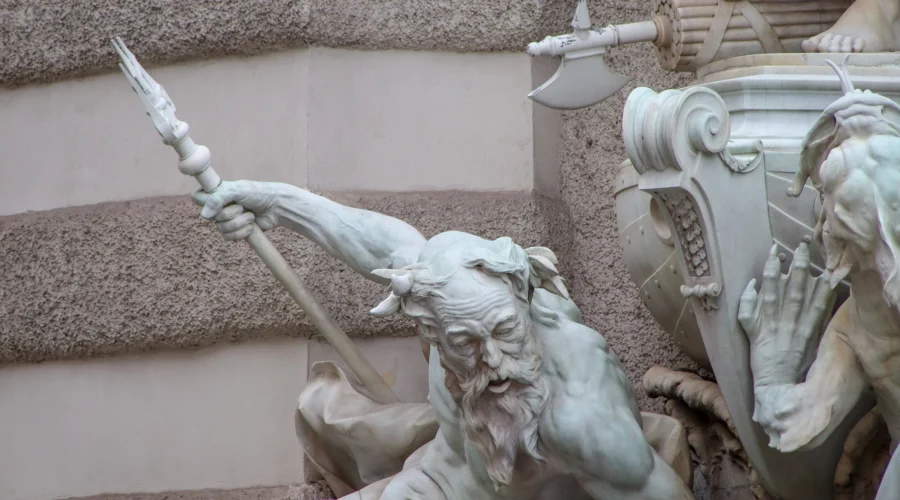
A History of Resilience
The Acropolis, despite its timeless grandeur, has experienced its fair share of challenges and adversities throughout its long history. One of the most significant events was the looting and burning of the Acropolis by Persian forces during the Persian Wars in the 5th century BC. This event, rather than marking the end of the Acropolis’s importance, spurred the Athenians to embark on an ambitious restoration program, restoring and even enhancing the Acropolis structures to their former glory. This monumental effort was not merely an act of architectural revival; it was a testimony to the resilience and cultural preservation of the Athenians. It demonstrated the unwavering commitment of the Athenians to their heritage and underscored the enduring importance of the Acropolis as the embodiment of their cultural identity. The Acropolis of Athens stands today as a living symbol of the cultural and architectural achievements of ancient Greece. It signifies the birthplace of democracy, the cradle of Western civilization, and a testament to the creative genius of the ancient Greeks. The site’s influence permeates various aspects of modern culture, from architectural design and artistic expression to philosophy, literature, and even the fundamental principles of democracy and individual liberty. In acknowledgment of its historical and cultural significance, the Acropolis was rightfully designated a UNESCO World Heritage Site in 1987. Nevertheless, despite its protected status, the site faces ongoing challenges, including pollution, natural weathering, and the impact of mass tourism. The Greek authorities, in collaboration with international partners, remain steadfast in their commitment to preservation and restoration efforts to ensure that this historical treasure remains accessible to future generations.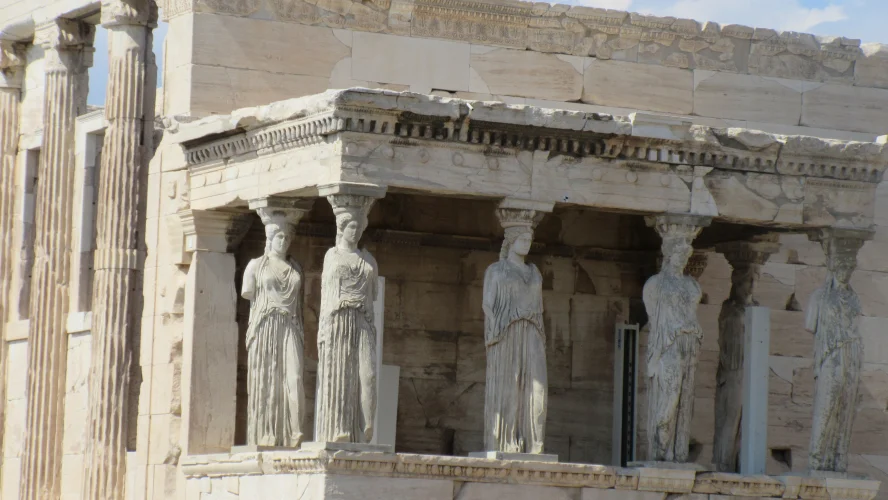
Conclusion
The Acropolis of Athens stands as a timeless symbol of the ancient world’s architectural and cultural achievements. Its rich history, architectural magnificence, and cultural significance make it an essential destination for history enthusiasts and tourists from across the globe. The Acropolis offers an enchanting window into Greece’s illustrious past and its invaluable contributions to human civilization, reinforcing the everlasting legacy of this enduring masterpiece.More information
The Acropolis ticket grants visitors access to the archaeological site of the Acropolis and its slopes, including the Parthenon, the Theater… see more
The Parthenon is an iconic symbol of ancient Greek civilization and a masterpiece of classi…
On Athens’ Acropolis, there is a stunning and well-known ancient Greek temple called…

